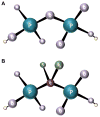Bisphosphonate treatment for children with disabling conditions
- PMID: 24368091
- PMCID: PMC4037384
- DOI: 10.1016/j.pmrj.2013.10.009
Bisphosphonate treatment for children with disabling conditions
Abstract
Fractures are a frequent source of morbidity in children with disabling conditions. The assessment of bone density in this population is challenging, because densitometry is influenced by dynamic forces affecting the growing skeleton and may be further confounded by positioning difficulties and surgical hardware. First-line treatment for pediatric osteoporosis involves conservative measures, including optimizing the management of underlying conditions, maintaining appropriate calcium and vitamin D intake, encouraging weight-bearing physical activity, and monitoring measurements of bone mineral density. Bisphosphonates are a class of medications that increase bone mineral density by inhibiting bone resorption. Although bisphosphonates are commonly prescribed for treatment of adult osteoporosis, their use in pediatric patients is controversial because of the lack of long-term safety and efficacy data.
Copyright © 2014 American Academy of Physical Medicine and Rehabilitation. Published by Elsevier Inc. All rights reserved.
Figures


References
-
- Khosla S, Bilezikian JP, Dempster DW, et al. Benefits and risks of bisphosphonate therapy for osteoporosis. J Clin Endocrinol Metabol. 2012;97:2272–2282. - PubMed
-
- Black DM, Delmas PD, Eastell R, et al. Once-yearly zoledronic acid for treatment of postmenopausal osteoporosis. N Engl J Med. 2007;356:1809–1822. - PubMed
-
- Cummings SR, Black DM, Thompson DE, et al. Effect of alendronate on risk of fracture in women with low bone density but without vertebral fractures: Results from the Fracture Intervention Trial. JAMA. 1998;280:2077–2082. - PubMed
-
- Seeman E. Bone modeling and remodeling. Crit Rev Eukaryot Gene Expr. 2009;19:219–233. - PubMed
-
- Haapasalo H, Kontulainen S, Sievanen H, Kannus P, Jarvinen M, Vuori I. Exercise-induced bone gain is due to enlargement in bone size without a change in volumetric bone density: A peripheral quantitative computed tomography study of the upper arms of male tennis players. Bone. 2000;27:351–357. - PubMed
Publication types
MeSH terms
Substances
Grants and funding
LinkOut - more resources
Full Text Sources
Other Literature Sources
Medical

